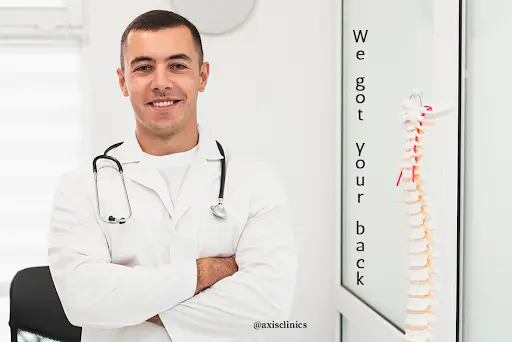
Welcome to a comprehensive guide on understanding, preventing, and treating slipped discs. A slipped disc, also known as a herniated or ruptured disc, is a common spinal condition that can lead to significant discomfort and pain. This guide will cover the causes, symptoms, diagnosis, treatment options, preventive measures, and overall management of this condition. By comprehensively understanding this topic, you can take proactive steps to address slipped discs effectively.

Before delving into the step-by-step instructions, let’s briefly understand what a slipped disc is and how it impacts individuals. This overview will provide context, setting the stage for a detailed exploration.
A slipped disc occurs when the gel-like center of a vertebral disc protrudes through a tear in the tough outer layer, putting pressure on surrounding nerves. Factors contributing to this condition include age-related wear and tear on the spine, poor posture, lifting heavy objects improperly, engaging in repetitive motions, obesity, and genetic predispositions.
Step 1: Understanding the Causes
To effectively manage and prevent slipped discs, it’s crucial to comprehend the root causes. The causes primarily stem from age-related degeneration, poor lifestyle habits, and genetic factors.
Step 2: Recognizing Symptoms
Identifying the symptoms is essential for timely intervention. Symptoms range from back pain and radiating discomfort to numbness, tingling, muscle weakness, and reflex changes.
Step 3: Diagnosis and Treatment Options
Diagnosis involves medical history, physical examination, and imaging tests. Treatment varies from conservative management, pain relief, corticosteroid injections to surgical intervention, depending on the severity.
Step 4: Preventive Measures
Preventing slipped discs involves maintaining good posture, regular exercise, and avoiding repetitive
strain. Implementing these measures reduces the risk of developing this condition.
The success in managing slipped discs lies in a balanced approach involving early detection, prompt medical attention, and consistent preventive measures.
Success stories of individuals managing slipped discs through a combination of lifestyle adjustments, proper medical care, and proactive measures can inspire and provide clarity to those navigating this condition.
Conclusion: Summarizing the Path to Wellness Through Understanding and Management of Slipped Discs
In conclusion, the journey to effectively manage slipped discs begins with knowledge and a proactive approach. This guide has navigated through the causes, symptoms, diagnosis, treatment options, and preventive measures, offering insights into this common spinal condition.
Understanding the intricate connection between age-related wear and tear, poor posture, lifting habits, and genetic predispositions sheds light on the factors contributing to slipped discs. Recognizing symptoms like back pain, radiating discomfort, numbness, muscle weakness, and reflex changes allows for early detection and timely medical intervention.
Diagnosis and treatment methods, from conservative management to surgical interventions, present a spectrum of options for individuals grappling with slipped discs. While some may find relief through rest, physical therapy, and medication, others might require surgical solutions for more severe cases. Preventive measures are the cornerstone of managing slipped discs. The cultivation of good posture, regular exercise focusing on core strength, and avoidance of repetitive strain can significantly reduce the risk of developing this condition.
The power to promote a healthier spine and overall well-being lies in taking charge of one’s health. Early detection, coupled with adopting preventive measures, is key to reducing the impact and occurrence of slipped discs. By actively engaging in lifestyle adjustments, seeking timely medical attention, and embracing a preventive approach, individuals can pave the way to a more comfortable and healthier life.
Herniated Disc: Also known as a slipped disc, it refers to the condition where the soft center of a vertebral disc protrudes through a tear in the outer layer.
Numbness: A lack of sensation or tingling, often caused by nerve compression in cases of slipped discs.
Corticosteroid Injections: Medications directly injected into the affected area to reduce inflammation and alleviate pain.
Information Resource Section: External Links for Further Research